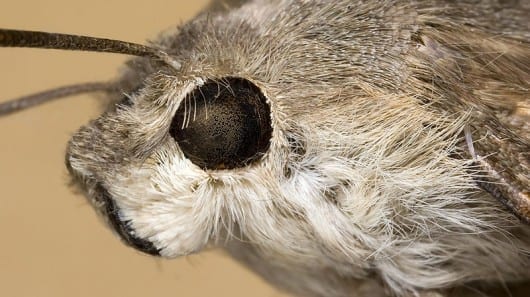In order for a solar cell to be as efficient as possible, the last thing it should be is reflective – after all, light should be getting absorbed by it, not being bounced off.
With that in mind, a few years ago a group of Japanese scientists set out to create an antireflective film coating for use on solar cells. What they ended up creating utilizes the same principles that are at work in one of nature’s least reflective surfaces: moth’s eyes.
The moth-eye film was developed by Noboru Yamada, a scientist at Nagaoka University of Technology Japan, who collaborated with researchers at Mitsubishi Rayon Co. Ltd. and Tokyo Metropolitan University. Using anodic porous alumina molds, they were able to nanoimprint the microstructure of moth’s eyes into acrylic resin – this provided a high throughput, large-area/low-cost method of producing the film.









